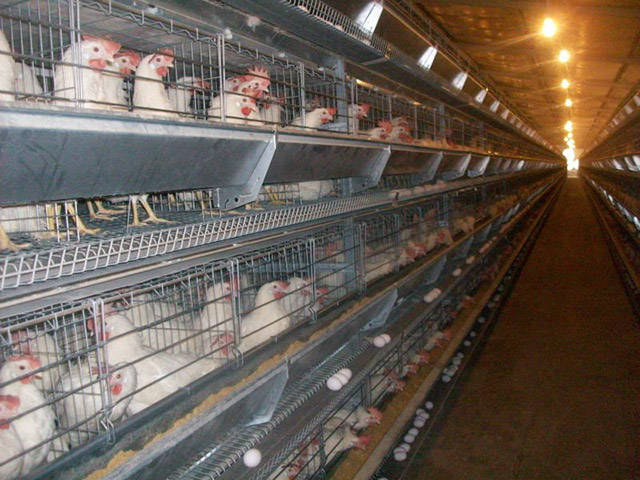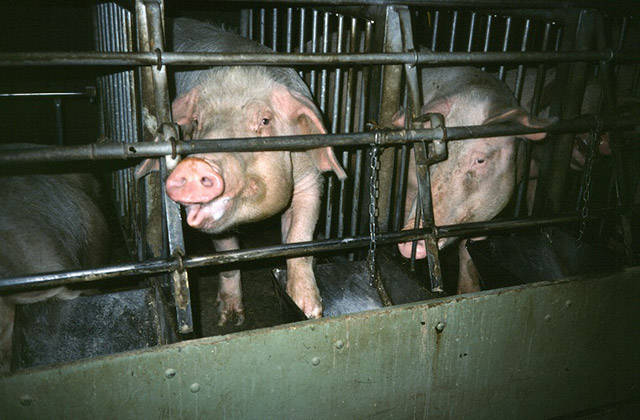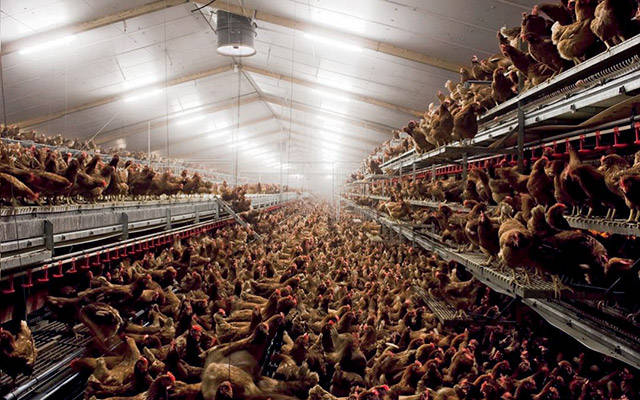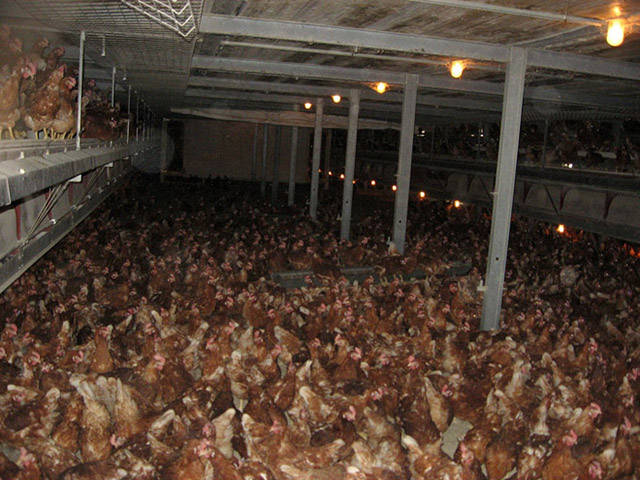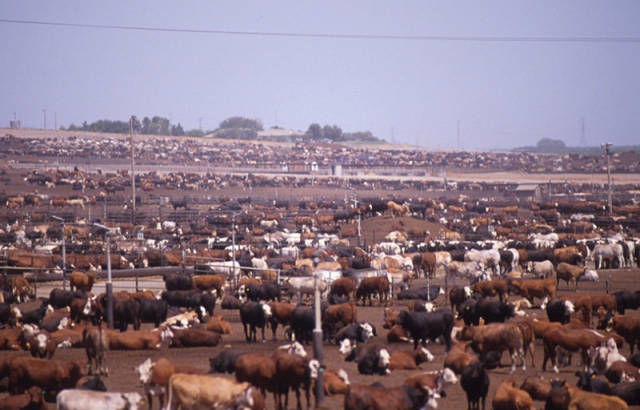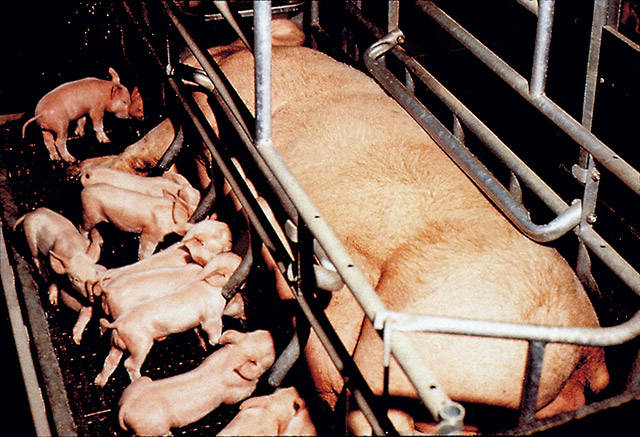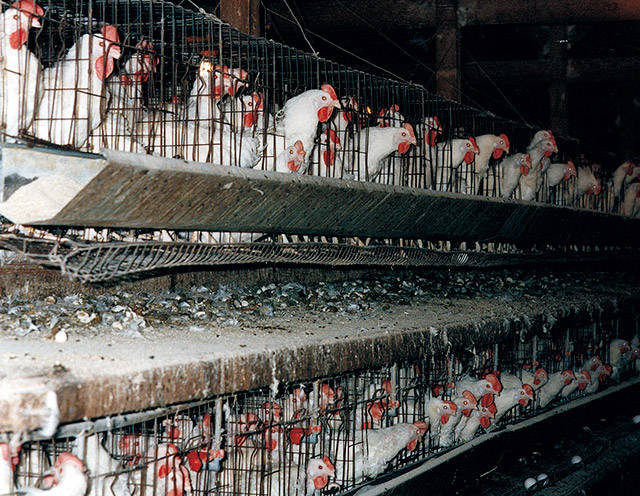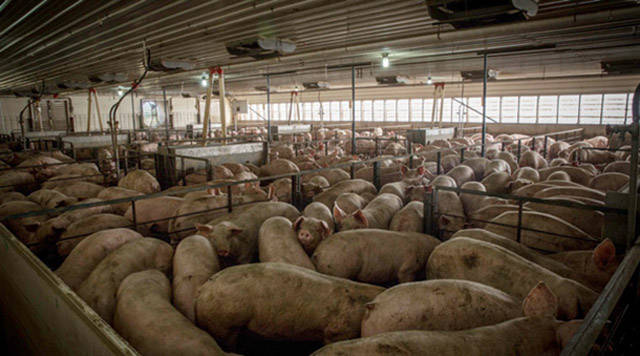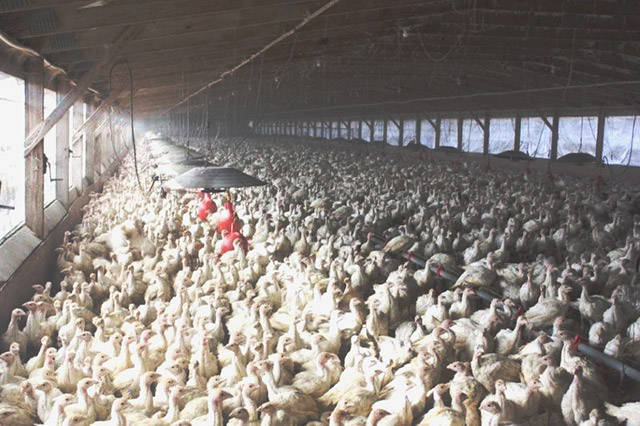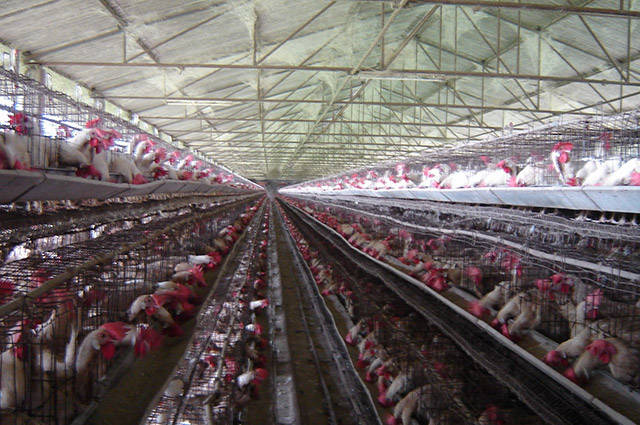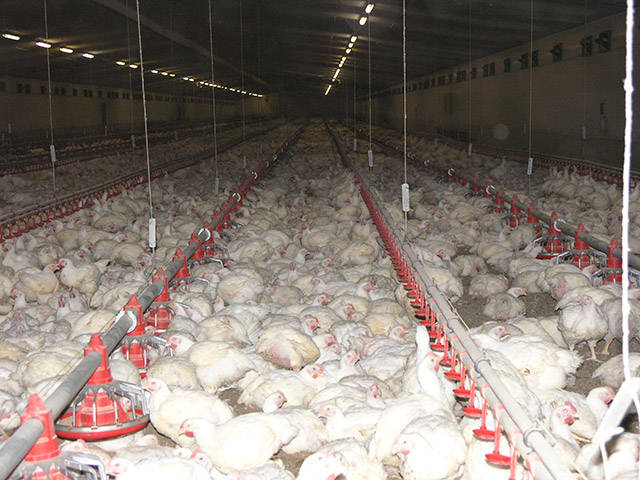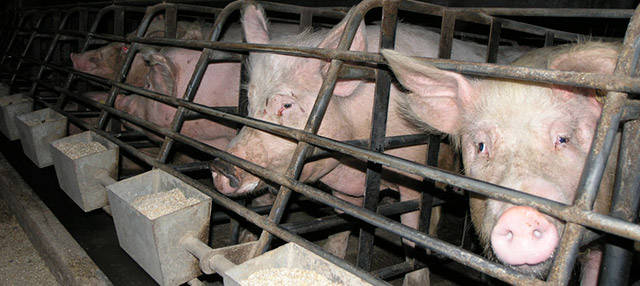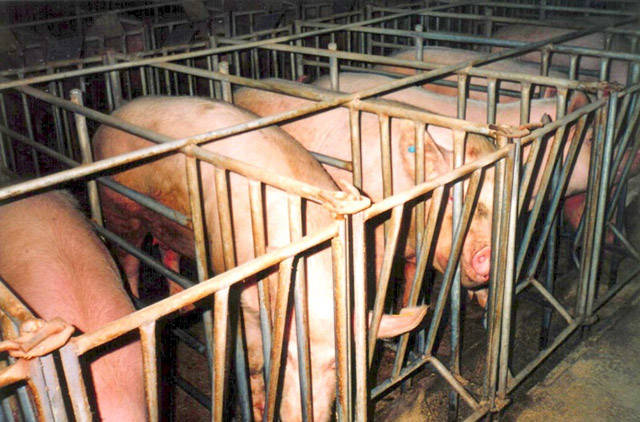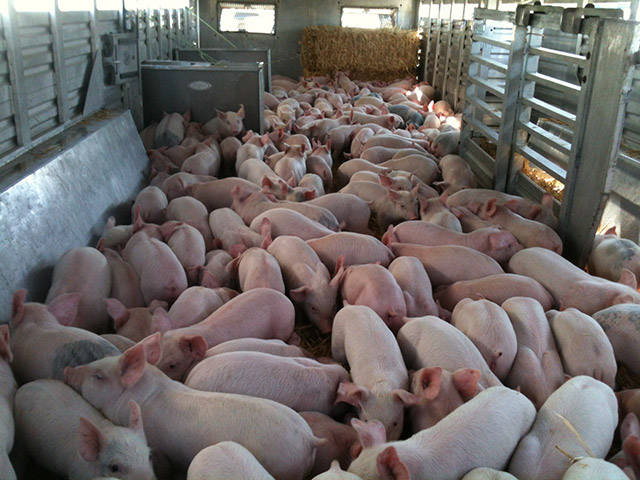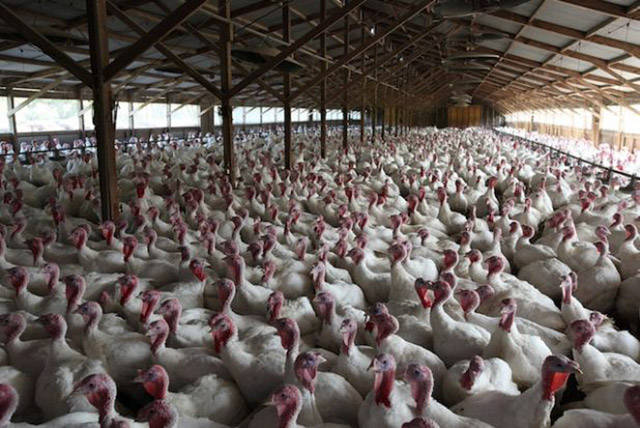95% of egg-laying hens spend their lives in battery cages. Battery cages commonly hold 5–10 birds, and each chicken may be given an amount of floor space equivalent to less than a sheet of letter-size paper. Constantly rubbing against and standing on wire cages, hens suffer severe feather loss, and their bodies become covered with bruises and abrasions.
There were more than 5.8 million pigs used for breeding in the United States in 2011, most of whom were confined to gestation crates, typically lined up row after row in large sheds. These naturally curious and intelligent animals are first impregnated at 7 months of age and live out their lives in a cycle of pregnancy, birth, and nursing until they are eventually sent to slaughter.
Due to selective breeding, commercial male turkeys rapidly grow to a weight 3 times larger than wild male turkeys in only 4 months. Rapid growth and resulting heavy body weight can lead to heart problems and painful leg issues, which can eventually lead to crippling.
Turkeys may be confined so tightly that each bird has only between 2.5 to 4 square feet of space each. This space only gets tighter as the turkeys grow larger.
Because male calves will not grow up to produce milk, they are considered of little value to the dairy farmer and are sold for meat. Millions of these calves are taken away to be raised for beef. Hundreds of thousands of other male calves born into the dairy industry are raised for veal. Many people consider veal to be cruel, but they don’t realize that veal production is a product of the dairy industry.
Shortly before piglets are born, sows are moved to “farrowing crates” where the piglets will be nursed. The crates, meant to separate the mother from the piglets to avoid crushing, are restrictive to the point that the mother pig can only stand and lie down — she cannot even turn around to see her piglets.
Usually just within hours of birth, calves are taken away from their mothers. Calves can become so distressed from separation that they become sick, lose weight from not eating, and cry so much that their throats become raw.
Chickens in the meat industry typically spend their lives confined to warehouse-like buildings, each packed with as many as 20,000 chickens. On average, the space per chicken is only slightly larger than a sheet of letter-size paper. This crowding can result in scratches and sores from the birds being forced to walk all over each other.
At only 17–20 days old, the piglets are taken away from their mothers and undergo a series of mutilations, including being castrated and having a portion of their tails removed without any sort of pain relief. The piglets spend the next 6 months of their lives confined to pens until they reach “market weight”; they are then trucked to slaughter.

